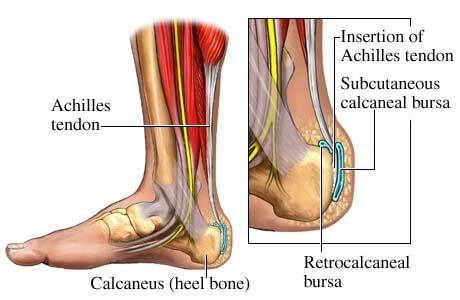Secrets of Recurring Heel Pain

Many patients are becoming even more active with age, and as this new generation of elderly patients become our community's senior citizens we are finding out more often that you are only as young as you feel. With this, there are different aches and pains, and they are more common and can be restricting towards maintaining this level of leisure. Above all other pains common to the foot and ankle, heel pain is by far the most common. Sometimes, we will be a 3rd and 4th opinion to attempt to remove this nuisance from our patient's feet. Most often heel pain is treated by cortisone injections, physical therapy, weight loss, and orthotics.
But what about the patients who have been there and done that?
There are few treatments that are more promising in the field of heel pain management with more potential than the
Extra Corporal Shockwave Therapy for very tough heel pain. A good overview of the proposed mechanism for how this works involves using devices that generate pulses of high-pressure sound that travel through the skin and yeild natural repair from the tissues and increased blood flow networks to damaged tissues.
For reasons that are not fully understood, soft tissue and bone that are subjected to these pulses of high-pressure energy heal back stronger and without causing further damage to the tissues like repeated cortisone injections may do.
The FDA has approved the use of some ESWT machines for heel pain and tennis elbow. ESWT devices evolved from lithotripters (a.k.a. kidney stone shock wave machines). The discovery of the beneficial effects of ESWT came as German researchers were trying to determine what type of high-pressure pulses could be sent through the body to disintegrate kidney stones without causing harm to surrounding tissue. In laboratory animals and humans, it was discovered (with some surprise) that surrounding tissue would often heal back stronger and this applies well to our topic of heel pain.
Physical therapists use ultrasound machines that warm internal tissue by high frequency sound waves, but the ESWT machines send higher-energy pulses 2 or 3 times per second rather than continuous lower-energy waves. Electricity is not sent into the body. It may take as long as 5 months to see the full benefit of an ESWT treatment. The beneficial effect of the high-pressure waves may be from the growth of new blood vessels ("neovascularization") in small cavities that are created by the pulses. New blood vessels to an area of tissue would promote healing either directly or indirectly by providing additional growth factors to the area of concern by way of new vascular channels.
Some studies have even shown this therapy to be equivalent to a fasciotomy, which is an invasive procedure that involves an incision to sever the medial fibers of the fascia for reduced pressure and tension on the inferior heel bone. This means that you can get equivalent results without the complications of a minor procedure. We can provide ESWT that has benefits that have been shown to work well on difficult heel pain. This can be beneficial to our patients, and if you are limping in the AM, or have trouble walking after a brief rest from activity because your heel is holding you back, you should consider a consultation with one of our doctors.
